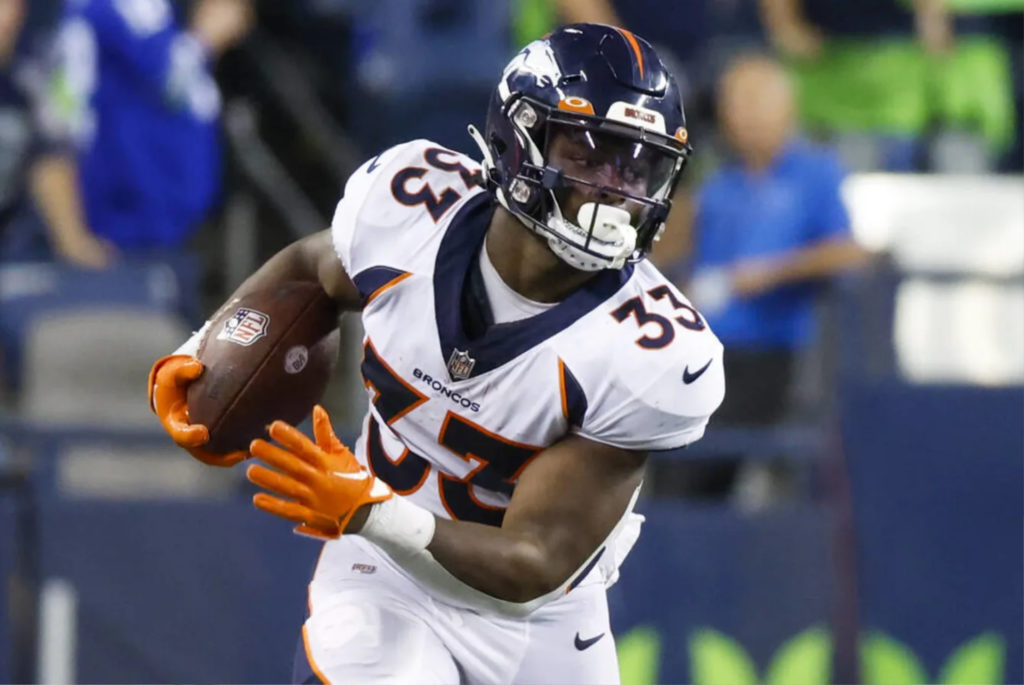
Week 4 was not kind to the NFL teams, as there were several significant injuries including that of Javonte Williams. The Denver Broncos running back sustained a knee injury when he was tackled by an opposing player.
While reports confirm that Javonte tore his ACL, a notorious season-ending injury, it has also been stated that he injured the posterolateral corner of his knee. The damage to this lesser-known structure certainly adds an additional wrinkle into Javonte’s treatment and recovery. We asked Far Hills Clinic Director, Angelo Scarpati, PT, DPT, CSCS, Cert. MDT, and Ramsey Clinic Director, Debbie Dieter-Barker, PT, DPT, for their insight into how this will affect Javonte’s rehabilitation and future in the NFL.
Javonte Williams injured his ACL, but also his posterolateral corner (PLC) in his knee. How does an injury like this occur? What is the mechanism of injury?
Debbie Dieter-Barker, PT, DPT: Typically, an injury to the posterolateral corner of the knee comes from some type of trauma or force to the front inside aspect of the knee while the foot is firmly planted on the ground. The force that is place across the knee is large enough that it goes beyond the threshold of the knee ligaments, and they tear as a result.
Angelo Scarpati, PT, DPT, CSCS, Cert. MDT: Javonte’s specific mechanism seemed to be knee hyperextension with a varus force to the leg.
What is the anatomy involved in a PLC injury?
AS: The PLC is a complex of ligaments that include lateral collateral ligament, popliteofibular ligament, popliteus tendon, arcuate ligament, short lateral ligament, and posterolateral joint capsule. Less than 30% of all PLC injuries are isolated. They are usually combined with a cruciate ligament injury (ACL, PCL).
DDB: The anatomy can also include the popliteal nerve which runs along the lateral bone (fibula) of the lower leg.
What is the difference between a PLC injury and an ACL injury?
AS: The ACL functions as the primary restraint of forward translation of the tibia (shin bone) relative to the femur (thigh bone). Its secondary function is to resist both internal and external rotation in weight bearing. The PLC prevents excessive internal rotation of the tibia. ACL injuries are also described as either contact or non-contact, with non-contact injuries accounting for 70% of all cases. Non-contact injuries occur when an injury results from a sudden pivoting or cutting maneuver. PLC injuries are usually the result of trauma.
What additional considerations are there for the post-op rehabilitation of a PLC reconstruction compared to an isolated ACL reconstruction?
DDB: When recovering from ACL reconstruction, the focus is on strengthening the stabilizing musculature, primarily your hamstrings. The hamstring muscles attach to the tibia to draw it posterior, preventing tibial anterior translation and protecting the ACL. When recovering from PLC reconstruction the focus is different stabilizing musculature including the iliotibial (IT) band, lateral component of the hamstring and the lateral head of the gastrocnemius (calf) muscle.
AS: The PLC is often not damaged in isolation, 70% of the times the injury is accompanied by ACL and PCL tears. If the PLC injury is associated with a peroneal nerve injury, there may be altered sensation to the foot and weakness with ankle dorsiflexion to consider. In both cases, the goal is to restore full range of motion and improve hip girdle strength while protecting the integrity of the repair. Once pain and swelling resolve, the criteria for progression includes demonstrating neuromuscular control and quadriceps strength and performing functional tests.
Will Javonte Williams be able to return to full function as a running back following this injury?
DDB: The true nature of the injury requires extensive healing time and rehabilitation. Return to play is dependent upon the severity of the injury and how complex the damage is. Injury can range from mild to devastating, and injury to the posterolateral corner involves more than just one structure. The more damage, the longer the recovery but it is possible to return to play, it is just player dependent.
AS: Research shows that the return to competitive sport after reconstruction is only about 54% overall. Return to sport is not a single event, but a process to return to the level of competition prior to injury. Fortunately for Javonte, he has the resources of a professional football organization and healthcare team to hopefully return to his pre-injury level of play.
The medical information contained herein is provided as an information resource only, and does not substitute professional medical advice or consultation with healthcare professionals. This information is not intended to be patient education, does not create any patient-provider relationship, and should not be used as a substitute for professional diagnosis, treatment or medical advice. Please consult with your healthcare provider before making any healthcare decisions or for guidance about a specific medical condition. If you think you have a medical emergency, call your doctor or 911 immediately. IvyRehab Network, Inc. disclaims any and all responsibility, and shall have no liability, for any damages, loss, injury or liability whatsoever suffered as a result of your reliance on the information contained herein.
